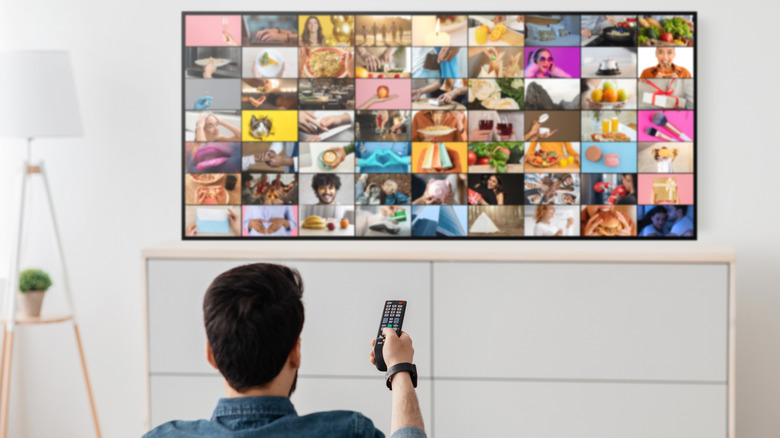
If you've ever spent much time in your local electronics store, then you may have noticed a certain inequality in the pricing patterns between televisions and computer monitors. TVs are, generally speaking, significantly more affordable than comparably sized monitors. In fact, there are several 55-inch, 4K televisions on the market today that you can get for significantly less money than a 1440p, 27-inch monitor. This might lead some to question the reasoning behind this discrepancy. Is the technology between these different kinds of display really so fundamentally different that it can explain such a large disparity in their value?
Sure, both points have validity. Multiple elements contribute to setting prices for electronic devices. Factors such as supply and demand, which are fundamental economic concepts, definitely influence the higher cost of computer monitors. As stated Alibaba , the global market for TVs is between two to four times larger than that of monitors (depending on sources). Computer monitors being in a smaller and more specialized market likely means that it's a less competitive one, and less competition usually means higher prices for any product. But economic factors aside, monitors also have different performance priorities than TVs. This means that there are a few key differences that can be commonly found in the physical hardware that may also contribute to the higher cost.
Read more: Top Priciest Gaming consoles Ever Launched, Ordered By Their Initial Cost
Differences In Picture

To someone who isn't looking too closely, televisions and computer monitors may appear to be essentially similar devices, particularly with how they have evolved nowadays. HDMI has emerged as the standard method for high-definition media connection across both kinds of displays. . There are even a handful of TVs out there that might make for a decent computer monitor if you wanted to go that route, but several key differences in the overall design philosophy of computer monitors make them better for up-close viewing. The first are the differences in brightness and color.
TVs are generally designed to be big, bright, and colorful. These traits are ideal when you're viewing an image from far away. Monitors, on the other hand, are more focused on pixel density and color accuracy. You'll often see the metric PPI (pixels per inch) used in reference to monitors. This is because the number of pixels in a square inch of the displace is more important to the way the human eye perceives sharpness and clarity when viewing a screen up close than the number of pixels overall. So, a smaller screen with fewer pixels may actually be able to produce a sharper image than a larger screen with more.
Color accuracy is another important factor that plays into monitors more than TVs. Bright and vibrant colors might be sufficient for entertainment purposes, but creative endeavors like graphic design, photo editing, and video editing all require the user to be able to view an accurate portrayal of the colors on the screen.
Differences In Input Speed And Refresh Rates

Another key distinction between TV and computer monitor performances relates to how swiftly they present images on-screen. Refresh rate denotes the frequency at which the display updates the imagery based on incoming data, typically quantified in Hertz (Hz).
A high refresh rate doesn't usually hold the same level of importance for televisions as it does for computer monitors, particularly in terms of gaming. Many contemporary TVs typically provide a refresh rate ranging from about 30 to 60 Hz, although certain models designed specifically towards gamers and sports enthusiasts might come close to achieving rates near 120 Hz. In comparison, the best gaming monitors And you might come across figures such as 144Hz, 165Hz, and even 240Hz. A significant part of this trend stems from the capability of graphics processing units (GPUs) utilized in modern computers to generate these frame rates. Most standard electronic devices connected to TVs usually cannot exceed 120 frames per second; however, top-tier gaming PCs have this potential. To fully benefit from this increased input frequency, your display needs to support an equally high refresh rate. However, one drawback is that screens with higher refresh rates generally command a premium price. Additionally, these monitors frequently boast faster response times—measuring how quickly each pixel switches colors.
Moreover, numerous computer screens come equipped with technology designed to reduce input lag from devices such as mice and keyboards, along with adaptive synchronization technologies like G-Sync and FreeSync. These capabilities offer distinct advantages for monitor performance; however, they may influence the cost.
Interested in staying updated with the newest technology and automotive developments? Sign up for our complimentary email newsletter. For the most recent news updates, detailed guidebooks, and practical advice, delivered once via email.
Read the original article on digitalwealthpath2025 .
0 Response to "Why Are Modern TVs Cheaper Than Most PC Monitors?"
Post a Comment